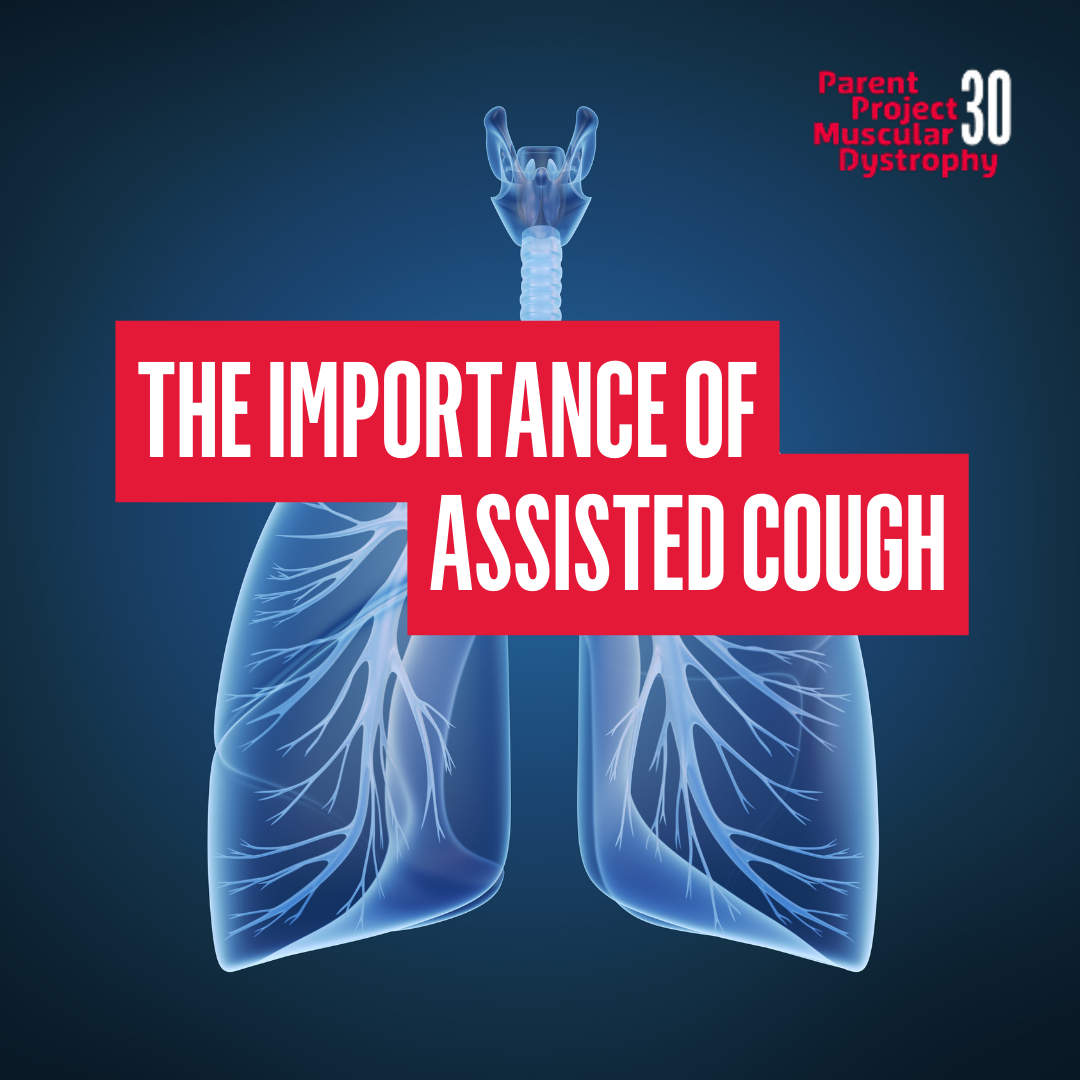
It’s winter, which means respiratory virus season is upon us. Those living with Duchenne and Becker may find themselves needing more support to help clear thick secretions that often accompany respiratory illness. Using assisted cough techniques is recommended to avoid pneumonia and other severe effects of respiratory illness.
Recently, we have become aware that a major respiratory equipment company, Philips Respironics, has stopped manufacturing CoughAssist devices. There are other similar and effective assisted cough devices on the market, but acquiring one may take several months due to increased demand.
For this reason, we recommend talking to your pulmonologist or respiratory therapist about potential equipment options or alternative methods such as breath stacking (more information below).
If you do not already have a cough assist, it’s important to consider ordering one early before any changes in your or your child’s pulmonary function.
Why Assisted Cough Techniques are Needed
The lungs of people living with Duchenne are not directly affected by the lack of dystrophin in Duchenne. However, the muscles responsible for breathing, including the diaphragm and the intercostal muscles (the tiny muscles between the ribs), can gradually weaken over time. As these muscles become weaker, patients can develop shallow breathing (hypoventilation) and a weak cough. This is especially important to consider during respiratory illness season when mucus becomes thicker and more difficult to clear.
To keep the lungs and breathing muscles working their best, it is important to practice lung volume recruitment (sometimes called breath stacking). This involves moving air into the lungs to inflate them to their largest volume in order to stretch the chest muscles to prevent muscle tightening and infections. You can think of lung volume recruitment as “physical therapy” for your lungs.
Breath Stacking Methods
Using Your Cough Assist Machine
One way to do this is by using your cough assist machine. Work with your pulmonologist to determine the settings of your machine, and with a respiratory therapist on how to use it properly. Because of the discontinuation of Philips Respironics devices, you may find that if your doctor recently recommended an assisted cough device for home use, there may be a delay in receiving your machine. Speak with your doctor about what to do if there is a delay receiving your machine, and what other options may be available to you.
Breath Stacking Without Equipment
If you or your child does not have a cough assist machine available or you are working through obtaining one, breath stacking can be done without any equipment. To demonstrate this process, please view the video below created by Amber Sapp, a physical therapist, with the help of her son, Garrett.
Recommended Practice
We recommend practicing lung volume recruitment/breath stacking at least 1-2 times per day, or more often as advised by your pulmonologist and respiratory therapist.
If you are concerned about you or your child’s respiratory status, contact your doctor or seek medical treatment right away. A list of CDCC important contact numbers can be found here.
For more information about respiratory health, check out our collection of videos



 by: Parent Project Muscular Dystrophy
by: Parent Project Muscular Dystrophy

